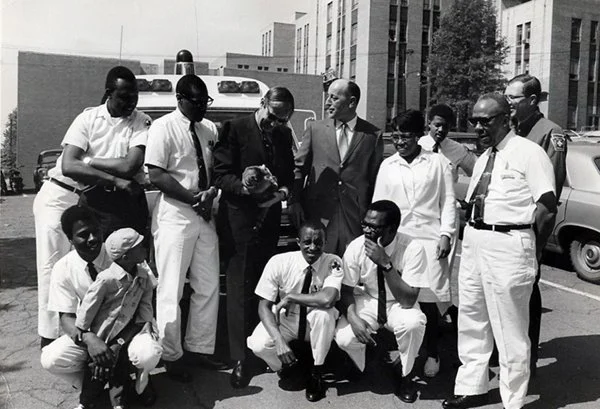
Freedom House & Beyond
Prehospital health and firefighting agencies were among the first careers to promote fairness in hiring and employing people from underserved areas soon after the Civil Rights laws of the 1960s were passed. Everyone deserves access to education, jobs, and equal opportunities, especially when caring for themselves and others. I follow their example.
Ground-Up
As a result of our fascination with automobiles, the number of highway injuries and deaths skyrocketed in the 1950s and 60s. The U.S. responded by creating the Highway Safety Act of 1966*. A culmination of social and logistical forces resulted in the creation of a prehospital, rapid-response infrastructure that could be trained to stabilize and treat patients while in transport to an advanced trauma and medical care facility, This system was labeled the Emergency Medical Service—EMS.
One of the first aims of EMS was to equip and respond to longstanding, high-risk neighborhoods, either before the emergency became life-threatening or, if that wasn’t possible, to stabilize the patient through lifesaving treatments and medicine while rushing to the nearest ER.
In fact, the first agency to train and deploy paramedics for prehospital life support was the Freedom House Ambulance Agency, staffed solely by African Americans. Freedom House was established in 1971 to serve the predominantly black Hill District of Pittsburg, Pennsylvania. It ran as a private company for eight years until the budget, social tensions, and the mayor’s decision to annex the company ended Freedom House.• Employees who did not have a criminal record were allowed to continue working for the City of Pittsburg. For more information regarding Freedom House, please refer to Freedom House: Street Saviors, a film by my friend, Gene Starzenski.
Citizens working in the same neighborhoods in which they were raised provided an opportunity for careers, a feeling of familiarity and solidarity to both caregivers and the cared-for, and afforded participation in community improvement. It was a ground-up effort that made an impact and legacy (several years ago, a Freedom House paramedic’s grandson attended my EMT course). The lasting ramifications of Freedom House are still seen in modern EMS culture. Urban-centered EMS programs attract the gamut of ethnicities, genders, cultures, and lifestyle proclivities. Marin County schools are quickly becoming a collection hub for educating the diaspora.
*Highway Safety Act of 1966 (PL 89–564). Legislative History. Washington DC: US Government Printing Office; 1967:2741–2765.
